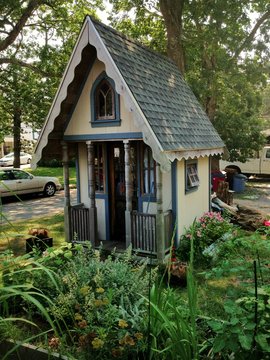 This House Enthusiast visited a local summer camp yesterday to present an architecture workshop. My hope, of course, was to inspire future house enthusiasts in the joys of the creative process.
This House Enthusiast visited a local summer camp yesterday to present an architecture workshop. My hope, of course, was to inspire future house enthusiasts in the joys of the creative process.
Twenty plus campers ranging in age from preschool to high school joined me in talking about what architecture is, what it's made out of, and what an architectural scale model is. Then, I introduced them to their project for the morning: to imagine a place to read and to construct a scale model of it out of sustainable materials that I provided.
 Each camper received a brown goodie bag containing a 6" x 12" thin piece of cork, four wooden plant-labeling sticks, four bamboo toothpicks, and a 2" x 6" piece of moss ribbon. We talked about the properties of each material, including the brown paper bag, and what each might represent in their models. For the sake of scale, I suggested that the length of a plant-label stick represents eight feet in the real world, which amounts to 3/4"=1'-0" scale. And then the campers launched into design and construction of their imagined places to read.
Each camper received a brown goodie bag containing a 6" x 12" thin piece of cork, four wooden plant-labeling sticks, four bamboo toothpicks, and a 2" x 6" piece of moss ribbon. We talked about the properties of each material, including the brown paper bag, and what each might represent in their models. For the sake of scale, I suggested that the length of a plant-label stick represents eight feet in the real world, which amounts to 3/4"=1'-0" scale. And then the campers launched into design and construction of their imagined places to read.
Much of the fun for me was when I got to play the supportive Tim Gunn role and visit the campers mid process to discuss and occasionally advise them on next steps. Naturally, I was very impressed with the kids' resourcefulness and good will. Here are some of them with their creations, and some close-ups of their scale-models of a place to read.
by Katie Hutchison for House Enthusiast













